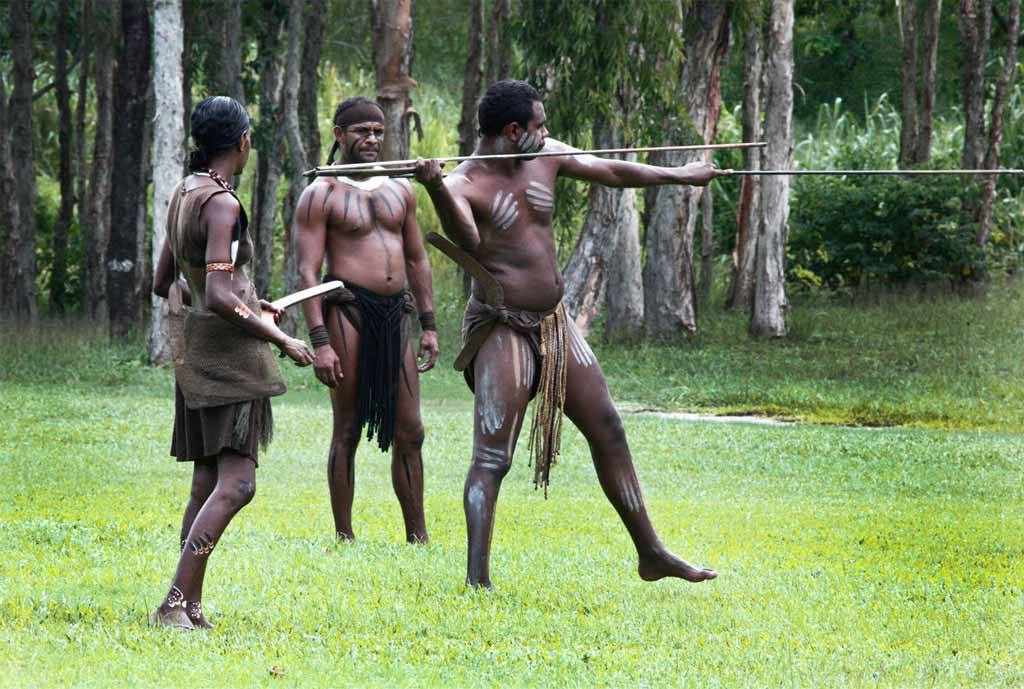We know all the same internet memes, laugh at the same jokes and follow the same fashion and tech trends.
There are those who argue that globalization is making us all the same, rather than celebrating our different cultures.
For us, this may be transient thought, but it’s a much more serious concern for indigenous populations that live on the fringes of what we would define as ‘modern’ society. These peoples – ‘untouched’ civilizations – face persecution, loss of their ancestral lands, death and disease due to contact with humans who carry bacteria they’ve never been exposed to before, and of course, loss of traditions that date back hundreds of years.
Here are five such civilizations with rich stories, that have tried to keep their ways of living unscathed and had varying levels of success in keeping themselves and their traditions alive:
1. The Sentinelese, India
The Sentinelese are one of the four indigenous Andaman tribes—the Great Andamanese, Onge, Jarawa, and Sentinelese – that live on the Andaman islands in the Bay of Bengal.
They are a hunter-gatherer society living on the North Sentinel Island, with their numbers ranging anywhere from 50-400 people. The little that has been established about them is based only on observational data from a distance, out of fear that human contact with new bacterias could lead to their extinction.
The Sentinelese themselves have resisted all attempts to be integrated into ‘modern’ society, remaining in isolation for over 60,000 years.
In order to protect the peoples, the Indian government has barred anyone from visiting the island, including officials and anthropologists.
2. Surma people, South Sudan and Ethiopia, along the Omo river
The Surma tribe actually consists of two separate tribes: the Suris and the Mursis.
Unfortunately, unlike the Sentinelese, the Surma are victims of encroachment by the government, with the construction of dams and national parks leading to their displacement.
The women are known for their large lip discs, which are symbols of beauty and status in their culture.
The Surma mainly raise cattle, and farm when the land is fertile. Cattle is a large status symbol for the tribes. They use weapons, including AK-47s, to protect their herd from being raided by opposing tribes.
3. Indians of Acre State, Brazil
There are up to 1,000 people from multiple tribes, all of them without contact, who live under the canopies of the jungle in Acre state, near Brazil’s western border with Peru.
Very little is known about those who live there, except that they still hunt with bows, arrows, and poison darts.
The most famous tribe is the Yanomami, the world’s largest Stone Age tribe, who have been documented – often falsely – by many anthropologists over the years. They, like their fellow Indians, are at risk due to increasing invasions by poachers, gold miners, and loggers.
Conservationists who are trying to protect the Indians urge the government and invaders to leave the tribes in total isolation, so they can survive and live in peace.
4. Shihuh Tribe, UAE
The Shihuh used to live both in the mountains and coasts of Ras Al Khaimah as fishermen and herdsmen, migrating between the two territories.
Though a majority of them have now moved to the cities, many still visit their old homes in the mountains.
The Shihuh lived in isolation for hundreds of years, up until the early 1970’s. As a result of this isolation, they speak in a unique Arab dialect that distinguishes them from other Emiratis.
Even having mostly embraced city life, they do still stick to their own traditions, some of which are similar to Emirati culture overall, such as dancing with sticks or rifles during celebrations.
While not exactly an “uncontacted” tribe, they are still part of the UAE’s older culture, and there are those who prefer to remain in the desert and mountains rather than assimilate in the cities.
5. Aborigines, Australia

Aborigines are the original inhabitants of Australia, and consist of around 500 different types of peoples, each with their own clans, customs, and language systems.
They are thought to have first arrived on the Australian continent about 50,000 – 65,000 years ago.
Prior to colonization, the Aborigines lived all over Australia as semi-nomadic hunter-gatherers, though they would mainly stay along the coast. They are an adaptable people, and even their tools reflect the location of different groups.
Land is a fundamental part of Aboriginal culture and tradition. They are tied to it, and their practices focus on sustainability and conservation.
Language is another integral part of their identity. They maintain an oral history through which they try to pass down their traditions to the next generation.
Aborigines often face abuse and persecution in modern Australia, with many of them living in squalid camps.
Many of these people are fighting for their homes, or even basic human rights, while others are lucky enough to be left alone, but all of them deserve to be respected.
Don’t miss: 3 CBT Psychology Techniques to Change Bad Habits, All You Need to Know About Dubai Parks and Resorts







![Social alienation is a sharp tactic in the toolkit of domination [although, here it is the extension of female subordination]. Photo by Hans Van Den Berg/ flickr.com](https://b-change.me/wp-content/uploads/2018/01/1sTnAkZgJEx1Yb6fctMyVuA-570x300.jpeg)


